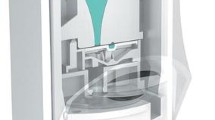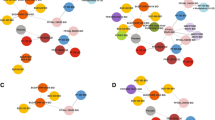Abstract
Background and objective: Combined therapy with inhaled corticosteroids (ICSs) and long-acting β2-adrenoceptor agonists (LABAs) is the recommended approach for the treatment of patients with asthma that is uncontrolled on ICSs alone. Additional studies are needed to assess the safety and efficacy of combination treatment with ICSs and LABAs in patients with mild asthma. The aim of this study was to compare the efficacy and tolerability of once-daily salmeterol/ fluticasone propionate combination (SFC) with once-daily fluticasone propionate (FP) over a 12-week treatment period in patients with mild persistent asthma.
Methods: This was a randomized, double-blind, placebo-controlled, parallel-group, multicentre study carried out in primary care or at a hospital outpatient department and included patients 12–79 years of age with mild persistent asthma (n = 458). After a 2-week run-in period, patients were randomized to receive SFC 50 μg/100 μg (n = 149), FP 100 μg (n = 154) or placebo (n = 155) once daily in the morning for 12 weeks. The primary efficacy endpoint was patient-recorded pre-dose mean morning peak expiratory flow (PEF). Other assessments included asthma symptom scores, use of rescue medication and investigator-recorded exacerbations. Lung function was measured and assessed during clinic visits.
Results: For the primary efficacy endpoint of mean change in morning PEF, SFC achieved significantly greater increases from baseline than both placebo (difference in adjusted means 23 L/min; 95% CI 15.0, 30.3; p < 0.001) and FP (difference in adjusted means 14 L/min; 95% CI 6.3, 21.7; p < 0.001). Compared with those who received FP, patients in the SFC group demonstrated significantly greater improvements in mean evening PEF (95% CI 11.7, 28.1; p < 0.001), forced expiratory volume in 1 second (95% CI 0.093, 0.257; p < 0.001), forced expiratory flow between 25% and 75% of forced vital capacity (95% CI 0.242, 0.617; p < 0.001), the percentage of symptom-free days (95% CI 0.34, 0.87; p = 0.011), and the percentage of rescue medication-free days (95% CI 0.34, 0.90; p = 0.018). During weeks 5–12, 52% of patients in the SFC group achieved ‘well controlled’ asthma, compared with 42% and 26% of patients in the FP and placebo groups, respectively. Only one patient (receiving placebo) had a severe asthma exacerbation during the study; the frequency of adverse events was similar across the three treatment groups.
Conclusion: Once-daily SFC 50 μg/100 μg provided significantly greater improvements in lung function and in asthma symptoms than once-daily FP 100 μg alone in patients with mild persistent asthma. However, twice-daily treatment with either SFC or ICSs plus short acting β2-adrenoceptor agonists could be required to achieve guideline-defined asthma control in some patients.





Similar content being viewed by others
Notes
The use of trade names is for product identification purposes only and does not imply endorsement.
References
Global Initiative for Asthma (GINA). Global Strategy for Asthma Management and Prevention: 2006 [online]. Available from URL: http://www.ginasthma.org/Guidelineitem.asp?. ?11=2&12=1&intId=60 [Accessed 2007 Jan 9]
Larj MJ, Bleecker ER. Therapeutic responses in asthma and COPD: corticosteroids. Chest 2004; 126(2 Suppl.): 138S–49S
Rabe KF, Jorres R, Nowak D, et al. Comparison of the effects of salmeterol and formoterol on airway tone and responsiveness over 24 hours in bronchial asthma. Am Rev Respir Dis 1993; 147 (6 Pt 1): 1436–41
Greening AP, Ind PW, Northfield M, et al. Added salmeterol versus higher-dose corticosteroid in asthma patients with symptoms on existing inhaled corticosteroid. Allen & Hanburys Limited UK Study Group. Lancet 1994; 344(8917): 219–24
Strand AM, Luckow A. Initiation of maintenance treatment of persistent asthma: salmeterol/fluticasone propionate combination treatment is more effective than inhaled steroid alone. Respir Med 2004; 98(10): 1008–15
O’Byrne PM, Barnes PJ, Rodriguez-Roisin R, et al. Low dose inhaled budesonide and formoterol in mild persistent asthma: the OPTIMA randomized trial. Am J Respir Crit Care Med 2001; 164 (8 Pt 1): 1392–7
Global Initiative for Asthma. Global strategy for asthma management and prevention: 2004 [online]. Available from URL: http://www.ginasthma.org/Guidelineitem.asp?.11=2&12= 1&intId=987&archived=1 [Accessed 2007 Jan 9]
Aldington S, Williams M, Weatherall M, et al. Duration of action of the salmeterol/fluticasone combination inhaler administered in the evening: a randomized controlled trial in childhood asthma. Respirology 2006; 11(5): 638–42
Masoli M, Weatherall M, Ayling J, et al. The 24h duration of bronchodilator action of the salmeterol/fluticasone combination inhaler. Respir Med 2005; 99(5): 545–52
Lotvall J, Langley S, Woodcock A. Inhaled steroid/long-acting beta 2 agonist combination products provide 24 hours improvement in lung function in adult asthmatic patients. Respir Res 2006; 7: 110
LaForce CF, Pearlman DS, Ruff ME, et al. Efficacy and safety of dry powder fluticasone propionate in children with persistent asthma. Ann Allergy Asthma Immunol 2000; 85(5): 407–15
Berger WE, Ford LB, Mahr T, et al. Efficacy and safety of fluticasone propionate 250 microg administered once daily in patients with persistent asthma treated with or without inhaled corticosteroids. Ann Allergy Asthma Immunol 2002; 89(4): 393–9
Peden DB, Berger WE, Noonan MJ, et al. Inhaled fluticasone propionate delivered by means of two different multidose powder inhalers is effective and safe in a large pediatric population with persistent asthma. J Allergy Clin Immunol 1998; 102(1): 32–8
ZuWallack R, Adelglass J, Clifford DP, et al. Long-term efficacy and safety of fluticasone propionate powder administered once or twice daily via inhaler to patients with moderate asthma. Chest 2000; 118(2): 303–12
Masoli M, Weatherall M, Beasley R. Fluticasone given once versus twice a day: meta-analysis. Respirology 2005; 10(2): 183–8
Standardization of spirometry, 1994 Update. American Thoracic Society. Am J Respir Crit Care Med 1995; 152 (3): 1107-36
Global Initiative for Asthma. Global Initiative for Asthma (GINA) pocket guide for asthma management and prevention. Bethesda (MD): National Institutes of Health, National Heart, Lung, and Blood Institute, 1998. Publication No. 95-3659B
National Institutes of Health. National Asthma Education and Prevention Program. Guidelines for the diagnosis and management of asthma: expert panel report 2. Bethesda (MD): National Institutes of Health, National Heart, Lung and Blood Institute, 1997. Publication No. 97-4051
Bateman ED, Boushey HA, Bousquet J, et al. Can guideline-defined asthma control be achieved? The Gaining Optimal Asthma controL study. Am J Respir Crit Care Med 2004; 170(8): 836–44
Hollander M, Wolfe DA. Nonparametric statistical methods. London: Wiley, 1973
Teeter JG, Bleecker ER. Relationship between airway obstruction and respiratory symptoms in adult asthmatics. Chest 1998; 113(2): 272–7
Adams NP, Bestall JC, Lasserson TJ, et al. Fluticasone versus placebo for chronic asthma in adults and children. Cochrane Database Syst Rev 2005; 4: CD003135
Purucker ME, Rosebraugh CJ, Zhou F, et al. Inhaled fluticasone propionate by diskus in the treatment of asthma: a comparison of the efficacy of the same nominal dose given either once or twice a day. Chest 2003; 124(4): 1584–93
Wolfe J, Rooklin A, Grady J, et al. Comparison of once-and twice-daily dosing of fluticasone propionate 200 micrograms per day administered by diskus device in patients with asthma treated with or without inhaled corticosteroids. J Allergy Clin Immunol 2000; 105 (6 Pt 1): 1153–61
Walters JA, Wood-Baker R, Walters EH. Long-acting beta2-agonists in asthma: an overview of Cochrane systematic reviews. Respir Med 2005; 99(4): 384–95
Pauwels R, Smiltena I, Bagdonas A, et al. Seretide™ 50/100μg once daily is more effective than budesonide 400μg once daily in mild asthma: 2004 [online]. Available from URL: http://www.abstracts2view.com/ats/index.php [Accessed 2007 Jan 9]
Papi A, Canonica GW, Maestrelli P, et al. Rescue use of beclomethasone and albuterol in a single inhaler for mild asthma. N Engl J Med 2007; 356(20): 2040–52
Fredenburgh LE, Campion EW, Drazen JM. Clinical decisions: mild persistent asthma. N Engl J Med 2007; 357(2): 179–80
Acknowledgements
This study was sponsored by GlaxoSmithKline Research and Development Limited (protocol: SAS30023). Drs Jacques and Frith are employees of GlaxoSmithKline Research and Development Limited. Dr Boonsawat has received honoraria for speaking at scientific meetings and courses financed by GlaxoSmithKline and AstraZeneca. Dr Goryachkina has no conflicts of interest directly related to the content of this study.
The authors would like to thank the following investigators for their assistance with this study:
Australia: Dr M. Chia, Dr D. Freiberg, Dr M. Phillips, Dr C. Cooper, Prof. P. Thompson, Dr F. DeLooze, Dr P. Bardin, Dr C. Steinfort, Dr M. Coffey.
France: Dr D. Berman, Dr J.M. Houssel, Dr J.L. Cerutti, Dr A. Serrero, Dr F. Saint Martin, Dr F. Malaquin, Dr P. Greillier, Dr J. De Casamayor, Dr P. Bouche, Dr R. Klink, Dr F. Brugere, Dr F. Marmouz, Dr G. Somme.
Hungary: Dr Z. Gyori, Dr K. Radich, Dr H. Zibotics, Dr Z. Csontos.
Italy: Dr R. Zuin, Dr G. Cremona, Dr D. Ansalone, Dr U. Marchisio, Dr G. Pinchi, Prof. C.M. Sanguinetti, Dr M. Ronco, Dr S. Dagmar Rinnenburger, Prof. G. Bonsignore, Dr G. Pasini.
Philippines: Dr C. Yu, Dr C. Tady.
Russia: Prof. I. Smolenov, Prof. L. Ogorodova, Dr J. Popova, Prof. R. Fassakhov, Prof. V. Trofimov, Prof. M. Ilkovich, Dr T. Martynenko, Prof. I. Leshchenko.
Thailand: Dr S. Sompradeekul, Dr S. Janwityanujit, Dr A. Deesomchock, Dr H. Chantaphakul.
UK: Dr M. Garala, Dr B. Bodalia, Dr M. McCaughey, Dr S.J. Thomas.
Ukraine: Dr V. Gavrisuk, Dr Y. Feschenko, Dr V. Putintsev, Dr E. Dgiga.
Author information
Authors and Affiliations
Corresponding author
Rights and permissions
About this article
Cite this article
Boonsawat, W., Goryachkina, L., Jacques, L. et al. Combined Salmeterol/Fluticasone Propionate versus Fluticasone Propionate Alone in Mild Asthma. Clin. Drug Investig. 28, 101–111 (2008). https://doi.org/10.2165/00044011-200828020-00004
Published:
Issue Date:
DOI: https://doi.org/10.2165/00044011-200828020-00004




